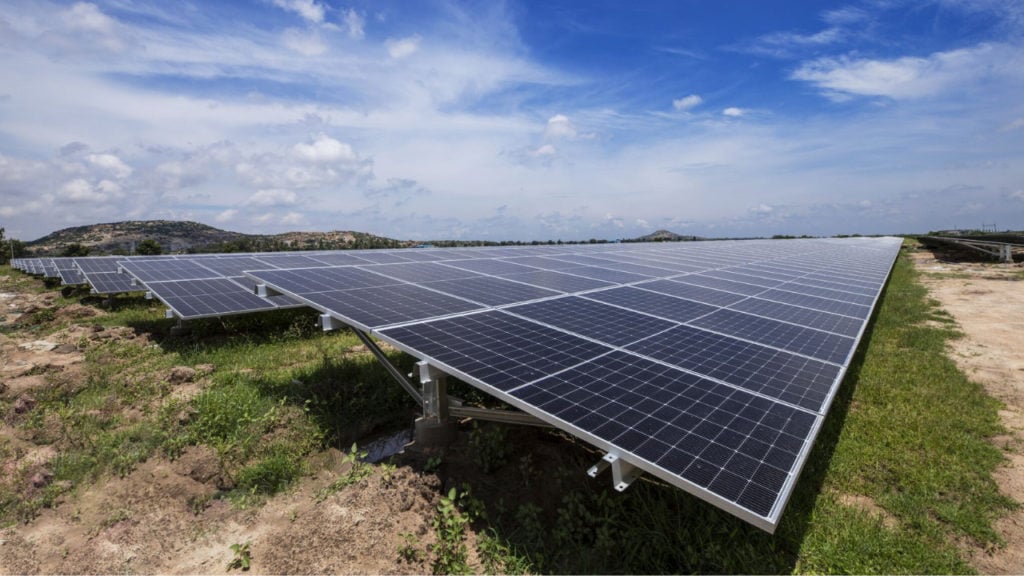
Indonesian energy policy think tank, the Institute for Essential Services Reform (IESR), has penned a new report stating that the country stands to gain from the influx of new solar manufacturing capabilities yet it is still underutilising its generation potential.
According to the report ‘Indonesia Energy Transition Outlook 2025’, foreign investment in the country’s manufacturing capabilities will enable Indonesia to add 200,000 tonnes of polysilicon, 11GW of wafers, 17GW of cells, and 19GW of modules annually.
Try Premium for just $1
- Full premium access for the first month at only $1
- Converts to an annual rate after 30 days unless cancelled
- Cancel anytime during the trial period
Premium Benefits
- Expert industry analysis and interviews
- Digital access to PV Tech Power journal
- Exclusive event discounts
Or get the full Premium subscription right away
Or continue reading this article for free
This increase in investment is fuelled by strategic initiatives, such as the Indonesia-Singapore Green Corridor project, which focuses on expanding domestic manufacturing capacity. Furthermore, access to export markets is a significant incentive, especially in light of the trade tensions between China and Western countries, heightened by Donald Trump’s recent victory in the US election.
Several well-known solar PV manufacturers have entered the Indonesian market owing to the substantial financial growth the country is expected to experience by 2050. Indeed, according to global accounting giant PwC, Indonesia will become the world’s fourth-largest economy by 2050.
US-based solar manufacturer Thornova Solar recently started producing solar modules for the US market at a plant in Indonesia. The new module production line has a 2.5GW nameplate capacity and can produce both PERC and n-type technologies.
In late September 2024, solar manufacturer SEG Solar started construction on a vertically integrated 5GW ingot-to-module TOPCon solar PV plant in the central Java province. Construction started less than six months after the company unveiled its plan to build the plant in May 2024.
SEG Solar expects to complete the first phase of the site by Q2 2025. No additional timeline has been disclosed for subsequent phases.
Alongside SEG Solar, Singapore-headquartered PV manufacturer Gstar recently started construction on a 3GW silicon wafer plant located in Jakarta. The plant is expected to start production by the end of 2024.
Indonesia underutilising its solar PV generation potential
Despite the potential of its manufacturing capabilities, Indonesia is still behind in deploying the renewable energy generation technology.
The IESR’s report indicates that the country is currently underutilising its solar energy potential. With an average solar irradiance exceeding 4.8kWh per square meter per day and abundant sunshine throughout the year, Indonesia has the capability to generate between 7.7 to 20TW of solar power.
The report states that realising this potential will require Indonesia to pursue targeted policies, robust investment, innovation and international collaboration.
When the country reached the 700MW milestone, the IESR deemed the country’s rollout of solar PV “inadequate” to comply with the global climate target.
A previous report released by the think tank showed that Indonesia’s installed solar PV capacity reached 717.71MW in August 2024. Interestingly, the 145MW Cirata floating solar PV project, installed in November 2023, almost tripled on-grid solar PV capacity that year.
It is worth noting that Indonesia has around 17GW of solar PV projects in its development pipeline. Indonesian state utility PLN will also develop around 3.2GW of solar PV by 2030.
As reported by PV Tech earlier this month, PV will form the cornerstone of Indonesia’s renewable power sector as the government looks to phase coal-fired electricity out of the energy mix by 2040, according to Ember Climate. This came after the government installed a target to reach 75GW of renewable energy generation by 2040.






